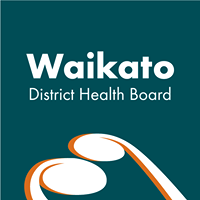Cellulitis Pilot Programme a Success
A pilot programme between Waikato District Health Board and general practitioners has seen the number of referred cellulitis attendances to hospital emergency departments reduce significantly.
The initiative was introduced a year ago. Before then patients required assessment at a Health Waikato emergency department (ED) to access treatment.
Cellulitis is a bacterial infection of the skin and underlying tissue. The onset is often sudden with the skin becoming red and tender. It rapidly turns bright red, shiny, swollen and hot.
Now the GPs manage most patients completely within primary care. Treatment consists of three once daily intravenous doses of an antibiotic followed by a course of oral antibiotics.
The general practice team administers the initial dose with the option for the two remaining doses to be given either by the team or district nursing service.
Practices were provided with initial treatment kits in November last year and were able to reorder kits on provision of utilisation data.
Initially the programme was funded to supply 500 doses over a 12-month period.
However utilisation was such in the first six months that increased funding was approved to provide 1000 treatment issues in the calendar year from May 1 this year.
From December 1-October 31, 711 patients were managed through the project without having to go to ED.
The reduction in predicted ED presentations to Health Waikato hospitals around the region was 84. Waikato DHB GP liaison Linda Rademaker said that was considerably less than the number of patients being treated via the programme.
"There was anecdotal information that, prior to implementation of the programme, patients were often being treated in primary care with other and variable medication regimes."
Dr Rademaker said the pilot project was able to standardise management across the DHB in line with recognised best practice.
"It is also providing information about the true level of need in the community." Only 53 patients failed treatment and were referred to hospital.
"The biggest gain I believe is in offering patients a choice and enabling it to be delivered in the community at greater convenience to the patient as well as targeting the secondary service at those who really need that level of care."
ENDS



 Angela Wanhalla & Jacinta Ruru, The Conversation: Books Of Mana - 10 Essential Reads For Waitangi Day
Angela Wanhalla & Jacinta Ruru, The Conversation: Books Of Mana - 10 Essential Reads For Waitangi Day FASD-CAN: People With Fetal Alcohol Spectrum Disorder (FASD) Dismayed At Government’s Response To The Rights Of Disabled People
FASD-CAN: People With Fetal Alcohol Spectrum Disorder (FASD) Dismayed At Government’s Response To The Rights Of Disabled People NZ Opera: Jane Austen Opera Coming To Christchurch & Dunedin - South Island Premiere | NZ Opera’s Mansfield Park Returns This April
NZ Opera: Jane Austen Opera Coming To Christchurch & Dunedin - South Island Premiere | NZ Opera’s Mansfield Park Returns This April Sport Manawatū: Women’s Health Series Empowers Women To Prioritise Their Wellbeing
Sport Manawatū: Women’s Health Series Empowers Women To Prioritise Their Wellbeing Pure Adventure Charitable Trust: Iconic One New Zealand GODZONE To Make Triumphant Return To New Zealand’s Adventure Racing Scene
Pure Adventure Charitable Trust: Iconic One New Zealand GODZONE To Make Triumphant Return To New Zealand’s Adventure Racing Scene The Charter School Agency: New Charter Schools Open Doors To First Students
The Charter School Agency: New Charter Schools Open Doors To First Students 